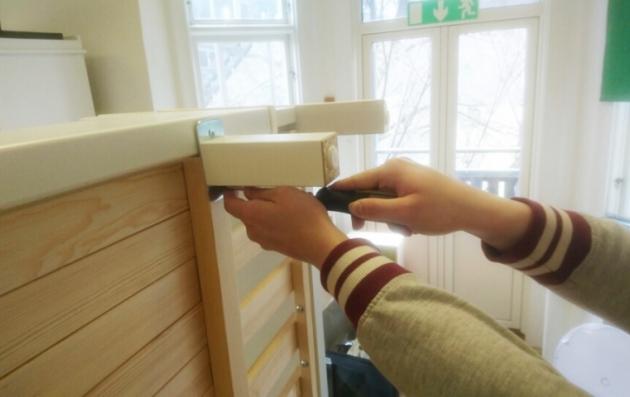Date of label : 02/06/2017

Summary
A cooperation - between the Gothenburg City (SE) administration for social welfare allocation and two local IKEA department stores - was launched in 2014 to provide homeless people with a step towards the labour market. The partnership enables people who have lived with isolation and abuse to strengthen their self-esteem, gain meaningful work and furnish their homes.
IKEA's recovery department has furniture that they can no longer sell because of transport damage to packaging or to the products themselves. Participants use a truck to pick up the discarded pieces of furniture at IKEA, fix them in a workshop, then display the repaired items. Other people in the group can then choose the furniture they need. A win-win situation: the participants, and the furniture, all get their second chance.
The solutions offered by the good practice
The solutions are: job training; recycling of discarded furniture; a good social context; cooperation between the municipal and the private sectors. It's good for the target group, good for the furniture company, good for the environment and good for society. It's proven that equality creates a better context for all citizens, not only for the target group of homeless people. These are solutions that are easy to copy elsewhere.
Building on the sustainable and integrated approach
Homelessness is a global urban problem and in the context of good practice this is an absolutely brilliant idea to give homeless people the possibility of taking the first step to the labour market. The URBACT fund is addressing common problem such as homelessness and drug abuse that are the dark side of the urban environment, but there can be great solutions to these problems.
We strongly believe that a second chance is good for everyone. All people have hidden abilities that we can find if we give them a second chance, or a third or a fourth. If you believe in humanity you also have to believe that everyone can grow. This is a context where the individuals can find their own strength grow and also find their own hidden abilities. This is in line with the URBACT positive approach.
Based on a participatory approach
From interviews with the participants about the project, we have found out what they believe and think about the content. The majority of them see that they are more ready for work than before and they also can see that their self-esteem has increased. They see that they have got something meaningful to do and that the work they do gives other people something that is useful for them, new furniture. Stakeholders are the allocation for social welfare and the city districts, IKEA and substance abuse treatment institutions.
What difference has it made?
This is a part of the ordinary activities in the municipality of Gothenburg addressing the homelessness problem since 2014. It has never been evaluated externally, although this has never been a project with external funding. We don't get any money for the restored furniture as it is donated by IKEA and then given away.
This is a very fruitful cooperation between the municipality and IKEA, and both parts are very happy with the cooperation we have. For the target group, this has made a huge difference in the quality of life of the most vulnerable on the outskirts of urban life.
Why should other European cities use it?
All the things we have done are transferable to other cities. The target group of homeless people is to be found in every large or medium-sized city. Homeless but not hopeless is something that we work by.
In our case we have worked with IKEA and if other cities want to do the same, IKEA department stores are to be found everywhere in EU. We are sure that this small but smart idea can interest any city that is struggling with poverty, homelessness and vulnerability. We will be glad to show how.
-
173_Gothenburg_GPsummary.pdf(PDF, 109Ko)
